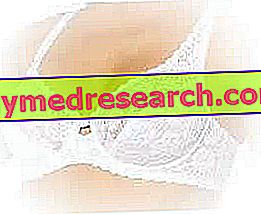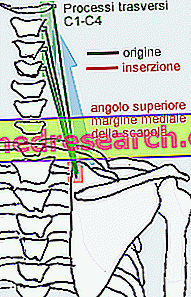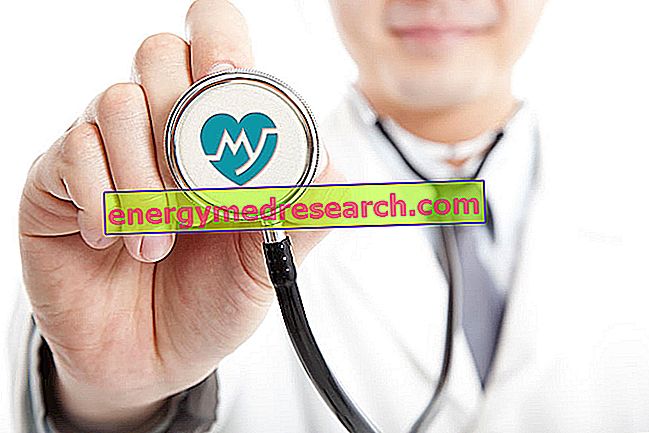Non-cyclic mastodynia
One speaks of non-cyclic mastodynia when breast pain manifests itself independently of the menstrual cycle.

Unlike cycle breast pain, non-cyclic mastodynia often reflects a disorder that is difficult to interpret, the causes of which can be varied, heterogeneous and not easily detectable.
Most of the time, breast pain is a cause of great concern to women: poorly interpreting the disorder, many patients are convinced that they are the target of some form of cancer or a problematic disease. Despite the medical check-up is still very important in these cases, it is advisable not to be alarmed unnecessarily before knowing the diagnostic outcome. Unlike widespread popular beliefs, in fact, only rarely do breast cancers begin with clear and precise symptoms such as breast pain.
Causes and symptoms
We have seen that cyclo-independent breast pain is often an ambiguous symptom, not always due to an easily identifiable cause.
Furthermore, this type of pain in the breast assumes a different connotation depending on the cause and the subjective perception of pain.
Depending on the causative agent, the pain in the breast may be intermittent or continuous, mild or acute, appearing in the form of twinges or slight soreness; moreover, the disorder can be felt only in one breast or both, and localize in a specific area of the breast or spread also along the arm.
Cycle-independent breast pain can ideally manifest itself in women of all ages: although this disorder is statistically more frequent in women over 40, many young girls also experience the same symptoms.
Given that the forms of cyclo-independent breast pain always require a specialized assessment, the most frequent causes of non-cyclic mastodynia are listed below:
- Drug therapy with contraceptive pills, contraceptive patches, hormonal IUD: a typical side effect of hormonal contraceptive methods is breast pain. Sometimes, even hormone replacement therapy (indicated for example for treating the symptoms of menopause, for treating hypogonadism and for hot flushes) can cause bothersome and constant pain in the breast. There have also been some reports of mastodynia during antidepressant therapy, such as in particular serotonin reuptake inhibitors, fluoxetine and sertraline.
- Bras inadequate: often, the cause of a pain in the breasts simply resides in an intimate garment not well suited to the shape and size of the breast. Women with a lot of breasts should avoid wearing push-up bras and prefer soft ones that are not too tight. During physical activity, it is recommended to use a sports bra, able to adequately support the breast.
- Exaggerated increase in weight: even weight gain can sometimes cause unpleasant breast tenderness. To preserve as much as possible the state of health, it is recommended to follow an adequate and balanced diet.
- Costochondritis: it is an inflammation of the cartilage that connects the ribs with the sternum. Many women suffering from this disease complain (improperly) of an unpleasant breast pain when, in reality, it is not a real mastodynia: the pain is concentrated at the level of the chest in the precise point that connects the ribs to the sternum. To avoid unpleasant misunderstandings, it is good to report all symptoms to the doctor, trying to be as precise as possible to avoid undergoing unnecessary and unnecessary diagnostic tests.
- Breast trauma: road accidents, injuries and breast surgery can clearly promote the onset of mastodynia.
- Joint affections: negatively affecting the breast, even osteo-articular disorders can cause an unpleasant breast soreness.
- Herpes zoster infections (shingles) at the level of the breast: in this case, the breast pain assumes a connotation and a clinical meaning completely different from the previous ones. The "false" mastodynia - always accompanied by a particularly noticeable local bullous rash - is easily reversible with adequate and specific care against the virus.
- Breast engorgement (a typical disorder of the immediate post-partum): the strong and pungent pain in the breast is the result of the stagnation of milk in the breast which, in addition to being painful, appears edematous, shiny and tense. This condition, although quite common after giving birth to a child, should not be neglected to minimize the risk of complications, such as mastitis (potentially fatal breast infection).
- Breast cancer: as repeatedly stated, breast cancers rarely present with clear and easily identifiable symptoms such as breast pain. However, in the case of suspected mastodynia - especially in association with signs such as milky or greenish nipple discharge, multiple breast lumps and nipple retraction - it is recommended to book a specialist check-up as soon as possible to ascertain any abnormal breasts.
- Stress and tension: even daily stress, depression and anxiety can somehow aggravate or even favor the onset of breast pain, regardless of the menstrual cycle.
- Antiestrogenic therapy: the anti-estrogen drug tamoxifen, even if indicated for the treatment and prevention of breast cancer in predisposed women, can sometimes accentuate or even cause breast pain.
Diagnosis and treatment
Fortunately, most of the time the breast pain turns out to be a completely reversible condition within a few days. However, when the disorder becomes rather heavy and annoying, analgesic drugs can help: NSAIDs such as paracetamol, ibuprofen and diclofenac (known prostglandin inhibitors) are indicated for inflammation and relief of breast pain.
When the breast pain becomes particularly aggressive and difficult to bear, so much so that not even the common analgesics are able to alleviate the discomfort, the doctor can surely direct the patient towards a more effective and targeted treatment based on the triggering cause.
Before undertaking any therapeutic procedure for cyclo-independent breast pain, the woman undergoes specific diagnostic tests, such as, in particular, breast ultrasound and mammography.
After shedding light on the causes of origin, the patient can follow a specific pharmacological cure.
When breast pain depends on hormone therapy, the doctor will correct the treatment or replace the drugs with others more suitable for the patient. The same applies to antidepressant drugs: let us briefly recall that some medicines prescribed for the treatment of depression can cause a certain tenderness to the breast.
The FDA ( Food and Drug Administration ) has designated danazol as a drug indicated to treat cycle-independent breast pain; however, its excessive side effects - such as acne, weight gain, hirsutism, change of voice - drastically limit its use in therapy.
In the unlikely event that the pain in the breast depends on a tumor, the woman will have to follow a different and much more aggressive treatment: based on the age of the patient, the type of cancer (benign / malignant) and the severity of the tumor, the woman will be treated with surgery (which includes surgical removal of the tumor mass), chemotherapy or radiotherapy.
Non-pharmacological remedies
In support of drug therapy, the patient must be informed about the correct behavior to take to relieve breast pain.
First of all, following an adequate diet, devoid of excesses and scarce of hyperlipidic foods (rich in fats) can only promote the general well-being of the person, minimizing the risk of developing unpleasant disorders such as breast pain.
Did you know that ...
It is scientifically proven that overweight women, who do not feed properly and follow an unregulated diet that is poor in fish products, are more prone to developing chronic inflammatory states, including breast pain. In these cases, the recommendation is to correct the diet and supplement the diet with an omega-3 supplementation, polyunsaturated fatty acids useful for normalizing the composition of cell membranes and protecting against generic chronic inflammatory states.
Particular attention must also be paid to the use of undergarments: every woman should choose a bra based on her body, regardless of what is advertised by the media. A bra that is too tight or unsuitable for breast size can indeed be a reason for non-cyclic mastodynia.
In the presence of a breast pain that tends to recur often, it is advisable to note the frequency, intensity and location of the pain in a notepad: the data reported may eventually be useful to the doctor at a later time to make it easier diagnosis, establishing for example if the pain depends or not on the menstrual cycle.
Among the natural remedies against breast pain can not miss the hot packs: many women suffering from this type of disorder benefit from the action of heat applied directly to the chest.
According to an ancient folk remedy, a multi-daily supplementation of evening primrose oil capsules (to be taken at a dose of 1 gram, up to 3 times a day) can be a valid complement to therapy for breast pain: this vegetable substance, rich in polyunsaturated fatty acids, is particularly indicated for the treatment of numerous morbid states on an inflammatory basis, including cyclo-independent breast pain.



